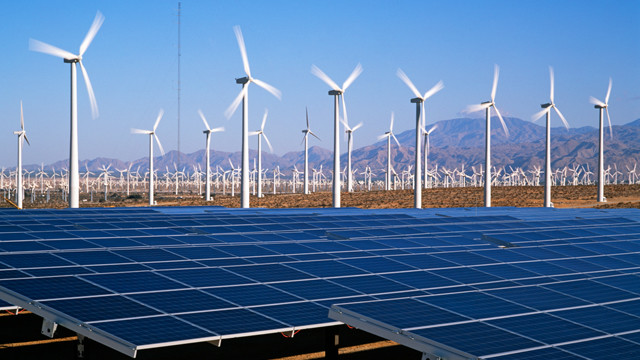Solar PV Technology, 𝐄𝐧𝐯𝐢𝐫𝐨𝐧𝐦𝐞𝐧𝐭𝐚𝐥𝐥𝐲 𝐅𝐫𝐢𝐞𝐧𝐝𝐥𝐲 𝐀𝐥𝐭𝐞𝐫𝐧𝐚𝐭𝐢𝐯𝐞 𝐑𝐞𝐧𝐞𝐰𝐚𝐛𝐥𝐞 𝐄𝐧𝐞𝐫𝐠𝐲 𝐒𝐨𝐮𝐫𝐜𝐞
 |
| Solar PV Technology, Environmentally Friendly Alternative Renewable Energy Source |
Solar PV Technology, Environmentally Friendly Alternative Renewable Energy Source
GLOBAL DIGITAL TIMES | Solar PV Technology: An Environmentally Friendly Alternative Renewable Energy Source - In an era marked by growing concerns over climate change and the finite nature of fossil fuels, the quest for sustainable and environmentally friendly sources of energy has taken center stage. Among the various alternatives, solar photovoltaic (PV) technology has emerged as a prominent contender. It harnesses the power of the sun to generate electricity, offering a clean and sustainable energy source that can significantly reduce our reliance on fossil fuels.
This article delves deep into the world of solar PV technology, exploring its history, functionality, environmental benefits, economic viability, and its potential to shape our energy landscape in the years to come. From the science behind solar panels to the practical applications and environmental impacts, we will embark on a comprehensive journey through the world of solar PV technology.
Chapter 1: The Evolution of Solar PV Technology
The journey of solar PV technology begins with the ancient Greeks, who first discovered the photovoltaic effect in the 6th century BC. We will explore the historical evolution of this technology, from its early roots to the modern solar panels that grace rooftops around the world.
Chapter 2: How Solar Panels Work
Understanding the science behind solar panels is essential to appreciate their functionality fully. In this chapter, we will break down the intricate process by which solar panels convert sunlight into electricity.
Chapter 3: Types of Solar PV Systems
Solar PV technology is not one-size-fits-all. There are various types of systems designed to cater to different needs and environments. This chapter will provide an in-depth exploration of the different types of solar PV systems, including grid-tied, off-grid, and hybrid systems.
Chapter 4: Solar Energy in Action
From residential installations to massive solar farms, solar energy is being harnessed in diverse ways. This chapter will take a closer look at the practical applications of solar PV technology, including its role in powering homes, businesses, and even vehicles.
Chapter 5: Environmental Benefits of Solar PV
One of the primary drivers behind the adoption of solar PV technology is its positive impact on the environment. This chapter will detail the environmental benefits, such as reduced greenhouse gas emissions and decreased reliance on fossil fuels.
Chapter 6: Economic Considerations
Is solar PV technology a financially sound investment? In this chapter, we will examine the economic aspects of solar energy, including government incentives, return on investment, and the long-term savings it can offer.
Chapter 7: Technological Advancements and Innovations
The world of solar PV technology is constantly evolving. This chapter will shed light on recent advancements in solar technology, including breakthroughs in efficiency, storage solutions, and emerging trends that could shape the future of solar energy.
Chapter 8: Solar PV and Energy Storage
Energy storage is a crucial component of a sustainable energy future. In this chapter, we will explore the integration of solar PV technology with energy storage solutions like batteries, and how this synergy can enhance the reliability of renewable energy.
Chapter 9: Solar PV on the Global Stage
Solar PV technology is not limited to one region or country. This chapter will provide a global perspective on the adoption and growth of solar energy, highlighting success stories and initiatives from around the world.
Chapter 10: Challenges and Barriers
While solar PV technology holds immense promise, it also faces challenges and barriers to widespread adoption. This chapter will discuss issues such as intermittency, energy storage, and the environmental impact of manufacturing solar panels.
Chapter 11: The Future of Solar PV Technology
As we near the end of our exploration, we will peer into the crystal ball and envision the future of solar PV technology. What might the world look like if solar energy continues to thrive and evolve?
Conclusion
In conclusion, solar PV technology represents a beacon of hope in our quest for a sustainable and environmentally friendly source of energy. From its ancient roots to its modern-day applications, solar energy has come a long way. With advancements in technology, a growing awareness of environmental issues, and the potential for economic benefits, solar PV technology is poised to play a pivotal role in shaping our energy landscape for generations to come.
As we close this chapter on the world of solar PV technology, it's evident that the sun has the power to illuminate not only our skies but also our future. Embracing this renewable energy source is not just an environmental choice; it's a commitment to a cleaner, greener, and more sustainable world.

